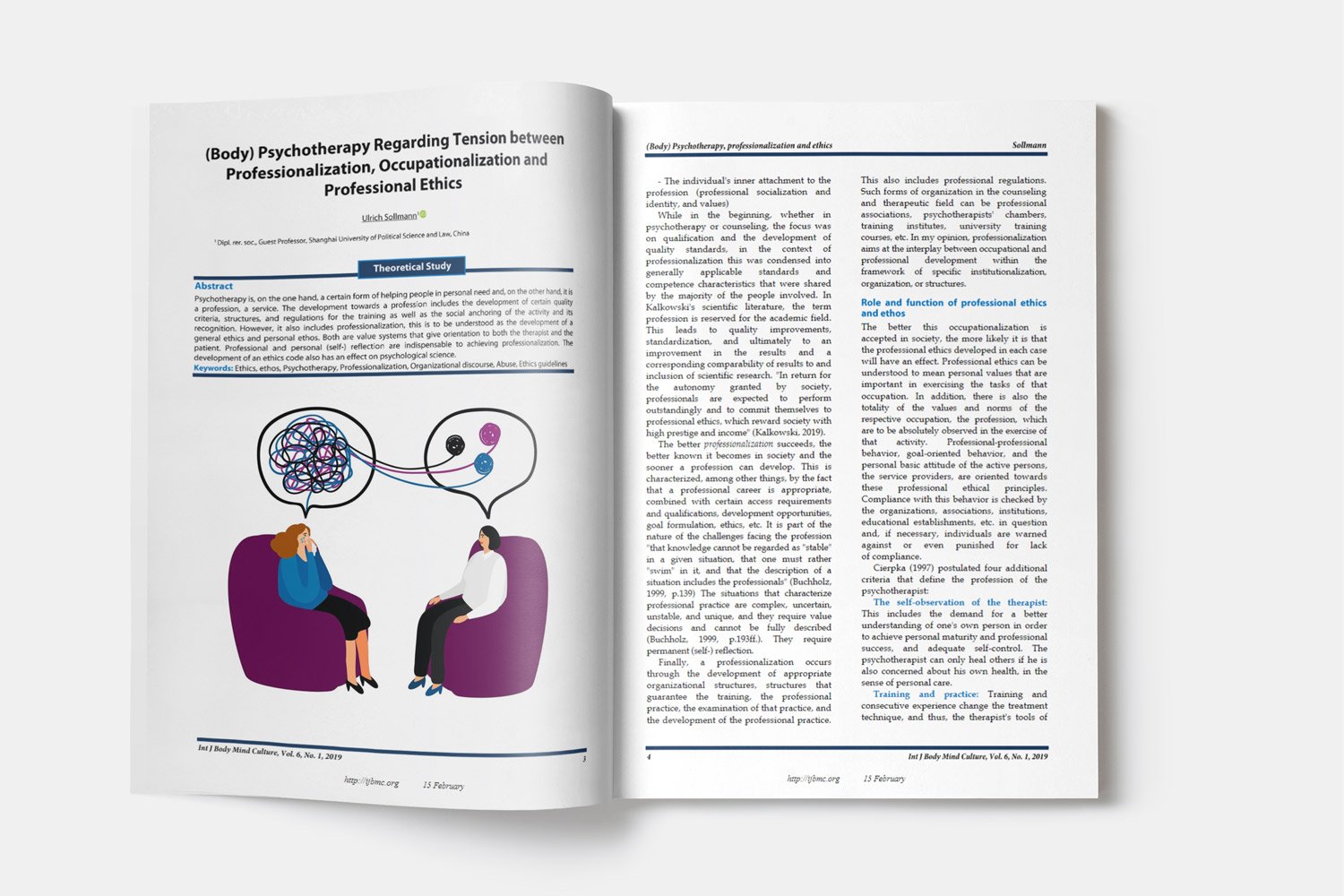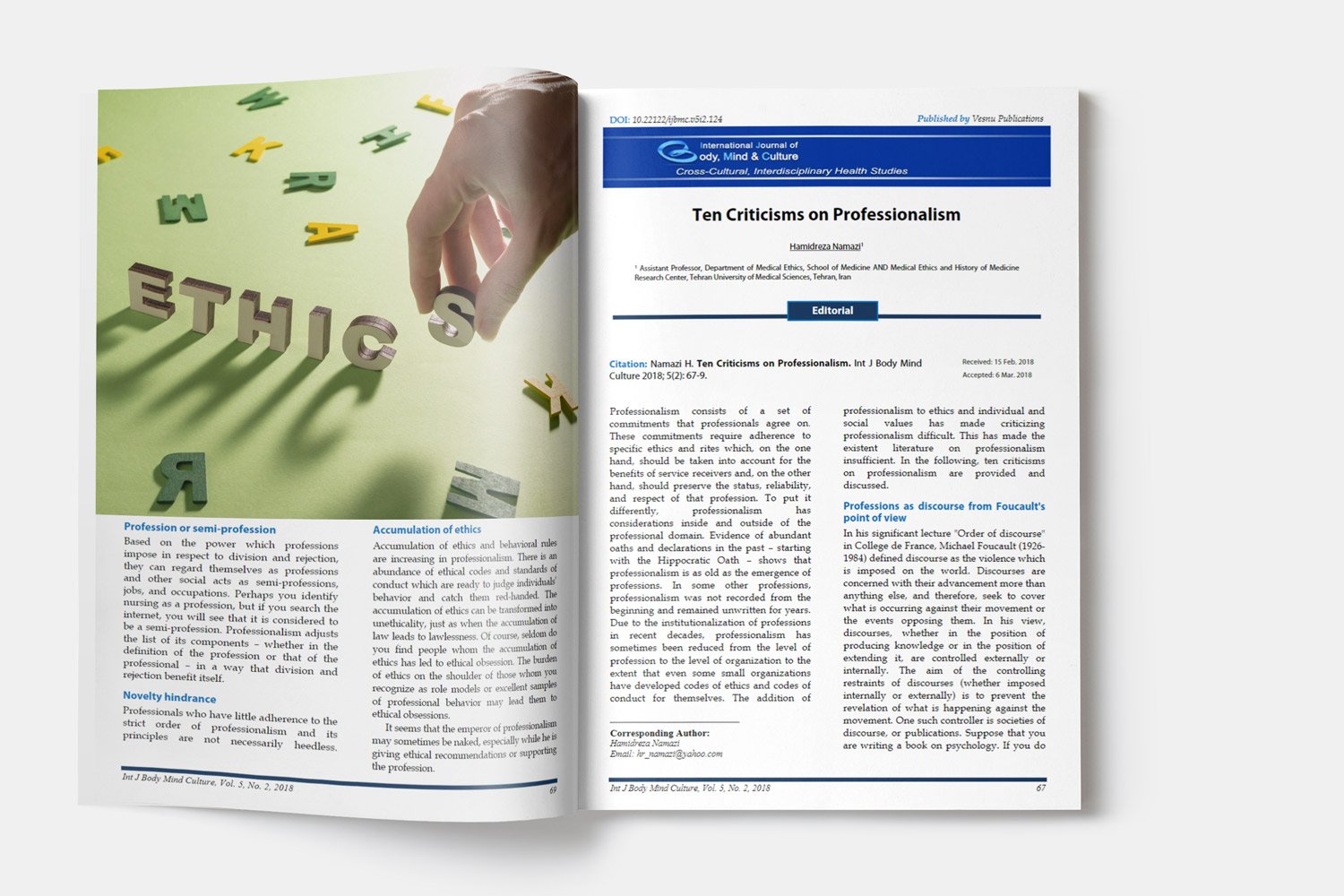The Effect of Unified Therapy on Quality of Life in Patients with Eating Disorder
Downloads
Background: This study was designed to determine the effect of unified therapy on quality of life (QOL) in patients with eating disorder.
Methods: The study population consisted of all women diagnosed with eating disorder in Kashan, Iran. A total of 95 patients in Kashan city were screened, from among whom, 60 were randomly selected and assigned to experimental and control groups. The experimental group received 12 sessions of unified therapy, while the control group did not receive any intervention. Subjects in both groups were evaluated for health related QOL.
Results: The results of ANCOVA revealed a significant difference between the experimental and control groups in terms of QOL.
Conclusion: Unified therapy with lifestyle variation, interpersonal relationships improvement, emotion regulation strategies, distress tolerance, and mindfulness is effective on QOL.Downloads
Agras, W. S., Crow, S. J., Halmi, K. A., Mitchell, J. E., Wilson, G. T., & Kraemer, H. C. (2000). Outcome predictors for the cognitive behavior treatment of bulimia nervosa: data from a multisite study. Am.J Psychiatry, 157(8), 1302-1308. doi:10.1176/appi.ajp.157.8.1302 [doi]. Retrieved from PM:10910795
Akbari, M., Roshan, R., Shabani, A., Fata, L., Shairi, M. R., & Zarghami, F. (2015). The comparison of the efficacy of transdiagnostic therapy based on repetitive negative thoughts with unified transdiagnostic therapy in treatment of patients with co-occurrence anxiety and depressive disorders: A randomized clinical trial. Iran J Psychiatry Clin Psychol, 21(2), 88-107.
Allen, L. B., McHugh, R. K., & Barlow, D. H. (2008). Emotional disorders: A unified protocol. In D. H. Barlow (Ed.), Clinical handbook of psychological disorders: A step-by-step treatment manual (pp. 216-249). New York, NY, US: Guilford Press.
Amini, H., Sharifi, V., Asadi, S. M., Mohammadi, M. R., Kaviani, H., Semnani, Y. et al. (2018). Validity of the Iranian version of the structured clinical interview for DSM-IV (SCID-I) in the diagnosis of psychiatric disorders. Payesh Health Monit, 7(1), 49-57.
Arnow, B., Kenardy, J., & Agras, W. S. (1992). Binge eating among the obese: A descriptive study. J Behav Med, 15(2), 155-170. Retrieved from PM:1583679
Bakhshipour Roodsari, A., Mahmood Aliloo, M., Farnam, A., & Abdi, R. (2013). Efficacy evaluation of unified transdiagnostic treatment in symptoms reduction of patients with generalized anxiety disorder and a comorbid emotional disorder. Journal of Modern Psychological Researches, 32(41), 47.
Balsiger, B. M., Murr, M. M., Poggio, J. L., & Sarr, M. G. (2000). Bariatric surgery. Surgery for weight control in patients with morbid obesity. Med Clin North Am., 84(2), 477-489. doi:S0025-7125(05)70232-7 [pii]. Retrieved from PM:10793653
Barlow, D. H., Farchione, T. J., Fairholme, C. P., Ellard, K. K., Boisseau, C. L., Allen, L. B. et al. (2010). Unified protocol for transdiagnostic treatment of emotional disorders: Therapist guide (1st ed.). Oxford, UK: Oxford University Press.
Barlow, D. H., Allen, L. B., & Choate, M. L. (2004). Toward a unified treatment for emotional disorders. Behavior Therapy, 35(2), 205-230.
Bidadian, M., & Bahrami Ehsan, H. (2013). A review on present challenges in treatment of obesity. J Res Behav Sci, 10(7), 757-771.
Bruce, B., & Agras, W. S. (1992). Binge eating in females: A population-based investigation. International Journal of Eating Disorders, 12(4), 365-373.
Cohen, J., Cohen, P., West, S. G., & Aiken, L. S. (2013). Applied multiple regression/correlation analysis for the behavioral sciences. London, UK, Routledge.
Cohen, J. (1992). Statistical power analysis. Current Directions in Psychological Science, 1(3), 98-101.
de Zwann, M. (2001). Binge eating disorder and obesity. Int J Obes.Relat.Metab.Disord., 25(Suppl 1), S51-S55. doi:10.1038/sj.ijo.0801699 [doi]. Retrieved from PM:11466589
Duval, K., Marceau, P., Lescelleur, O., Hould, F. S., Marceau, S., Biron, S. et al. (2006). Health-related quality of life in morbid obesity. Obes.Surg, 16(5), 574-579. doi:10.1381/096089206776944968 [doi]. Retrieved from PM:16687024
Fairburn, C. G., & Brownell, K. D. (2002). Current pharmacological treatments for obesity. IN K. D. Brownell, & B. T Wash, (Eds.), Eating disorders and obesity: A comprehensive handbook (pp. 551-556). New York, NY: Guilford Press.
Fairholme, C. P., Boisseau, C. L., Ellard, K. K., Ehrenreich, J. T., & Barlow, D. H. (2010). Emotions, emotion regulation, and psychological treatment: A unified perspective. In A. M. Kring & D. M. Sloan (Eds.), Emotion regulation and psychopathology: A transdiagnostic approach to etiology and treatment (pp. 283-309). New York, NY, US: Guilford Press.
Grilo, C. M., & Masheb, R. M. (2005). A randomized controlled comparison of guided self-help cognitive behavioral therapy and behavioral weight loss for binge eating disorder. Behav Res Ther, 43(11), 1509-1525. doi:S0005-7967(05)00004-5 [pii];10.1016/j.brat.2004.11.010 [doi]. Retrieved from PM:16159592
Halmi, K. A., Agras, W. S., Mitchell, J., Wilson, G. T., Crow, S., Bryson, S. W. et al. (2002). Relapse predictors of patients with bulimia nervosa who achieved abstinence through cognitive behavioral therapy. Arch.Gen.Psychiatry, 59(12), 1105-1109. doi:yoa10323 [pii]. Retrieved from PM:12470126
Hooman, F., Mehrabizadeh Honarmand, M., Zargar, Y., & Davodi, I. (2016). The Effectiveness of Transdiagnostic Therapy on Anxiety, Depression, Cognitive Strategies of Emotional Regulation, and General Performance in Women with Comorbid Anxiety and Depression. J Fasa Univ Med Sci, 5(4), 551-563.
Kim, S., & Popkin, B. M. (2006). Commentary: Understanding the epidemiology of overweight and obesity- a real global public health concern. International Journal of Epidemiology, 35(1), 60-67.
Kress, A. M., Peterson, M. R., & Hartzell, M. C. (2006). Association between obesity and depressive symptoms among U.S. Military active duty service personnel, 2002. J Psychosom.Res, 60(3), 263-271. doi:S0022-3999(05)00330-2 [pii];10.1016/j.jpsychores.2005.08.011 [doi]. Retrieved from PM:16516658
Kristeller, J. L., & Hallett, C. B. (1999). An Exploratory Study of a Meditation-based Intervention for Binge Eating Disorder. J Health Psychol, 4(3), 357-363. doi:4/3/357 [pii];10.1177/135910539900400305 [doi]. Retrieved from PM:22021603
Lillis, J., Levin, M. E., & Hayes, S. C. (2011). Exploring the relationship between body mass index and health-related quality of life: a pilot study of the impact of weight self-stigma and experiential avoidance. J Health Psychol., 16(5), 722-727. doi:1359105310388321 [pii];10.1177/1359105310388321 [doi]. Retrieved from PM:21441358
Mohammadi, A., Birashk, B., & Gharraee, B. (2014). Comparison of the Effect of Group Transdiagnostic Treatment and Group Cognitive Therapy on Emotion Regulation. Iran J Psychiatry Clin Psychol, 19(3), 187-194.
Mohammadkhani, P. , Jahani Tabesh, O. , Tamannaiefar, S., Jokar, M. Structured Clinical Interview for DSM-IV-TR. Tehran, Iran: Danjeh Publications; 2013.
Namjoshi, M. A., & Buesching, D. P. (2001). A review of the health-related quality of life literature in bipolar disorder. Quality of Life Research, 10(2), 105-115.
Nejat, S., Montazeri, A., Holakouie Naieni, K., Mohammad, K., & Majdzadeh, S. R. (2006). The World Health Organization quality of Life (WHOQOL-BREF) questionnaire: Translation and validation study of the Iranian version. J Sch Public Health Inst Public Health Res, 4(4), 1-12.
Newman, M. G., Zuellig, A. R., Kachin, K. E., Constantino, M. J., Przeworski, A., Erickson, T. et al. (2002). Preliminary reliability and validity of the generalized anxiety disorder questionnaire-IV: A revised self-report diagnostic measure of generalized anxiety disorder. Behavior Therapy, 33(2), 215-233.
Norton, P. J., Hayes, S. A., & Hope, D. A. (2004). Effects of a transdiagnostic group treatment for anxiety on secondary depression. Depress.Anxiety., 20(4), 198-202. doi:10.1002/da.20045 [doi]. Retrieved from PM:15643648
Polivy, J., & Herman, C. P. (1993). Etiology of binge eating: Psychological mechanisms. In Binge eating: Nature, assessment, and treatment (pp. 173-205). New York, NY, US: Guilford Press.
Rieger, E., Wilfley, D. E., Stein, R. I., Marino, V., & Crow, S. J. (2005). A comparison of quality of life in obese individuals with and without binge eating disorder. Int J Eat.Disord., 37(3), 234-240. doi:10.1002/eat.20101 [doi]. Retrieved from PM:15822089
Sharifi, V., Asadi, S. M., Mohammadi, M. R., Amini, H., Kaviani, H., Semnani, Y. et al. (2004). Reliability and Feasibility of The Persian Version of The Structured Diagnostic Interview for DSM-IV (SCID). Adv Cogn Sci, 6(1), 10-22.
Spitzer, R. L., Devlin, M. J., Walsh, B. T., Hasin, D., Wing, R., Marcus, M. et al. (1992). Binge eating disorder: A multisite field trial of the diagnostic criteria. Int J Eat Disord, 11(3), 191-203.
Stallone, D. D. , & Stunkard, A. J. (1991). The regulation of body weight: Evidence and clinical implications. Annals of Behavioral Medicine, 13(4), 220-230.
Telch, C. F. (1997). Skills training treatment for adaptive affect regulation in a woman with binge-eating disorder. Int J Eat.Disord., 22(1), 77-81. doi:10.1002/(SICI)1098-108X(199707)22:1<77::AID-EAT10>3.0.CO;2-F [pii]. Retrieved from PM:9140739
Telch, C. F., Agras, W. S., & Rossiter, E. M. (1988). Binge eating increases with increasing adiposity. International Journal of Eating Disorders, 7(1), 115-119.
Wilamowska, Z. A., Thompson-Hollands, J., Fairholme, C. P., Ellard, K. K., Farchione, T. J., & Barlow, D. H. (2010). Conceptual background, development, and preliminary data from the unified protocol for transdiagnostic treatment of emotional disorders. Depress.Anxiety., 27(10), 882-890. doi:10.1002/da.20735 [doi]. Retrieved from PM:20886609
Wing, R. R. (2004). Behavioral approaches to the treatment of obesity. In G.A. bray & C. Bouchard (Eds.), Handbook of obesity: Clinical applications (2nd ed., pp. 147-167). New York, NY: Marcel Dekker, INC.
World Health Organization. (1996). WHOQOL-BREF. Introduction, administration, scoring. and generic version of the assessment. Field trial version. Geneva, Switzerland: WHO.
Zemestani, M., & Imani, M. (2016). Effectiveness of transdiagnostic treatment on depression/anxiety symptoms and emotion regulation. Contemporary Psychology, 11(1), 21-32.
Zhang, H., Wisniewski, S. R., Bauer, M. S., Sachs, G. S., & Thase, M. E. (2006). Comparisons of perceived quality of life across clinical states in bipolar disorder: data from the first 2000 Systematic Treatment Enhancement Program for Bipolar Disorder (STEP-BD) participants. Comprehensive Psychiatry, 47(3), 161-168.















